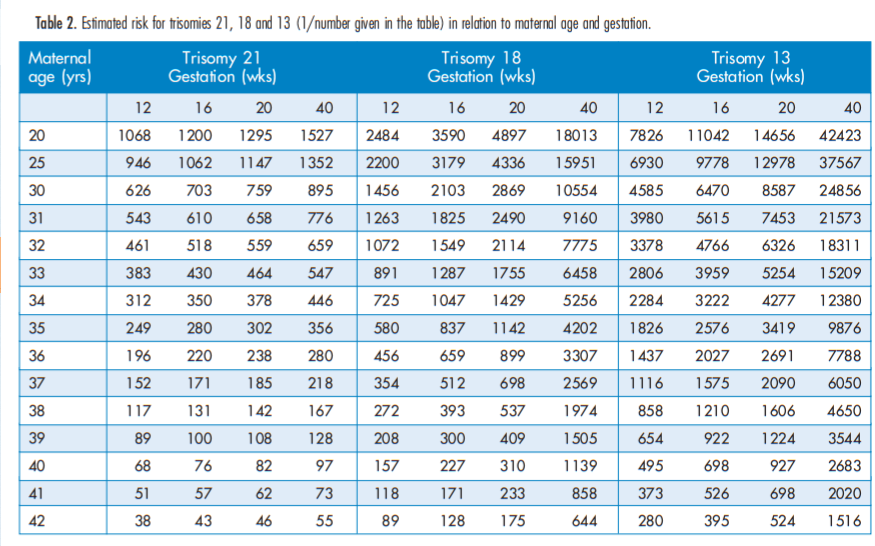Estimated Risks of Trisomy 21, 18, and 13 in Relation to Mother's Age and Gestational Weeks (1/Shown Table Numbers)
This is an article about the estimated risks of trisomy 21, 18, and 13 in relation to the mother's age and gestational weeks. The table here shows the estimated risks of trisomy 21, 18, and 13 in relation to the mother's age and gestational weeks.

Source: Kypros H. Nicolaides: The 11-13⁺⁶weeks scan. Fetal Medicine Foundation, London, 2004.
This table shows the estimated risks of trisomy 21, 18, and 13 in relation to the mother's age and gestational weeks.
The numbers in the table indicate that the risk is "the number shown in the table" to 1.
For example, let's compare the risk of trisomy 21 (Down syndrome) by age at 12 weeks of pregnancy. For a 25-year-old pregnant woman, the risk is 946 to 1, whereas for a 42-year-old pregnant woman, it is 38 to 1.
This means that for trisomy 21, 18, and 13, the risk increases with age.
On the other hand, it can be observed that the risk decreases as the gestational weeks progress, even at the same age. For example, looking at a 42-year-old pregnant woman with trisomy 21, the risk decreases from 38 to 1 at 12 weeks to 55 to 1 at 40 weeks, indicating that the risk of trisomy itself decreases as the weeks progress.
This is because the mortality rate of fetuses with trisomy is high. For example, there is a research result that the natural fetal death rate from 12 weeks to 40 weeks in trisomy 21 is about 30%, and at 16 weeks and 40 weeks, it is about 20%. In other words, about 30% of fetuses with trisomy die in the uterus between 12 and 40 weeks of pregnancy, so the probability of trisomy itself is reduced.
